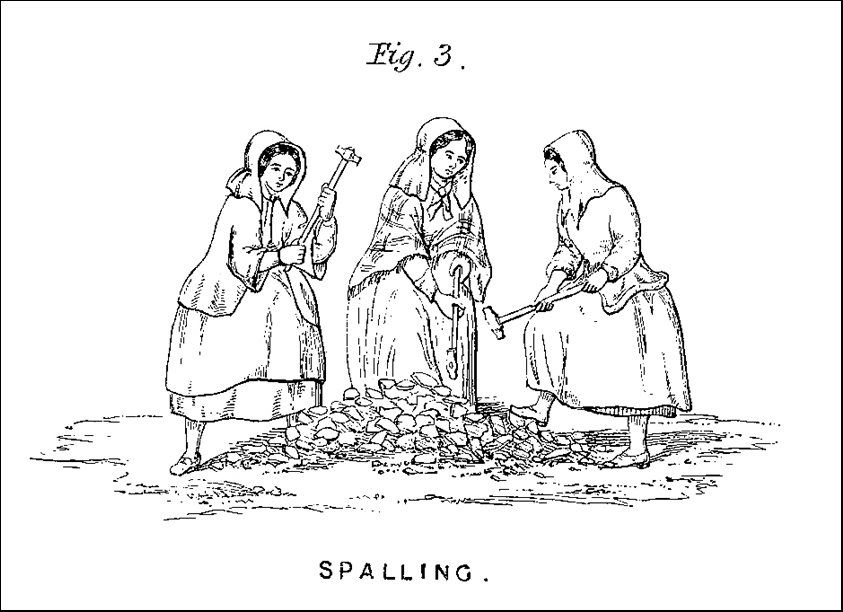Backwards to the Ground
Counter-Technologies and Geological Time
From circuits to minerals: working backwards to reconnect technology with its geological origins.
Reconstructed from notes, recordings, and material traces, this reflection was written six months after the Organised Atoms workshop at Cornwall’s United Downs Raceway, co-facilitated by Dave Griffiths and Rosi Jolly, in October 2024. The workshop explored the origins and material properties of electronic components through hands-on engagement with minerals, microscopes, and cardboard synthesisers. The rain remains the most persistent memory — not simply a backdrop, but an active participant in how the day unfolded.
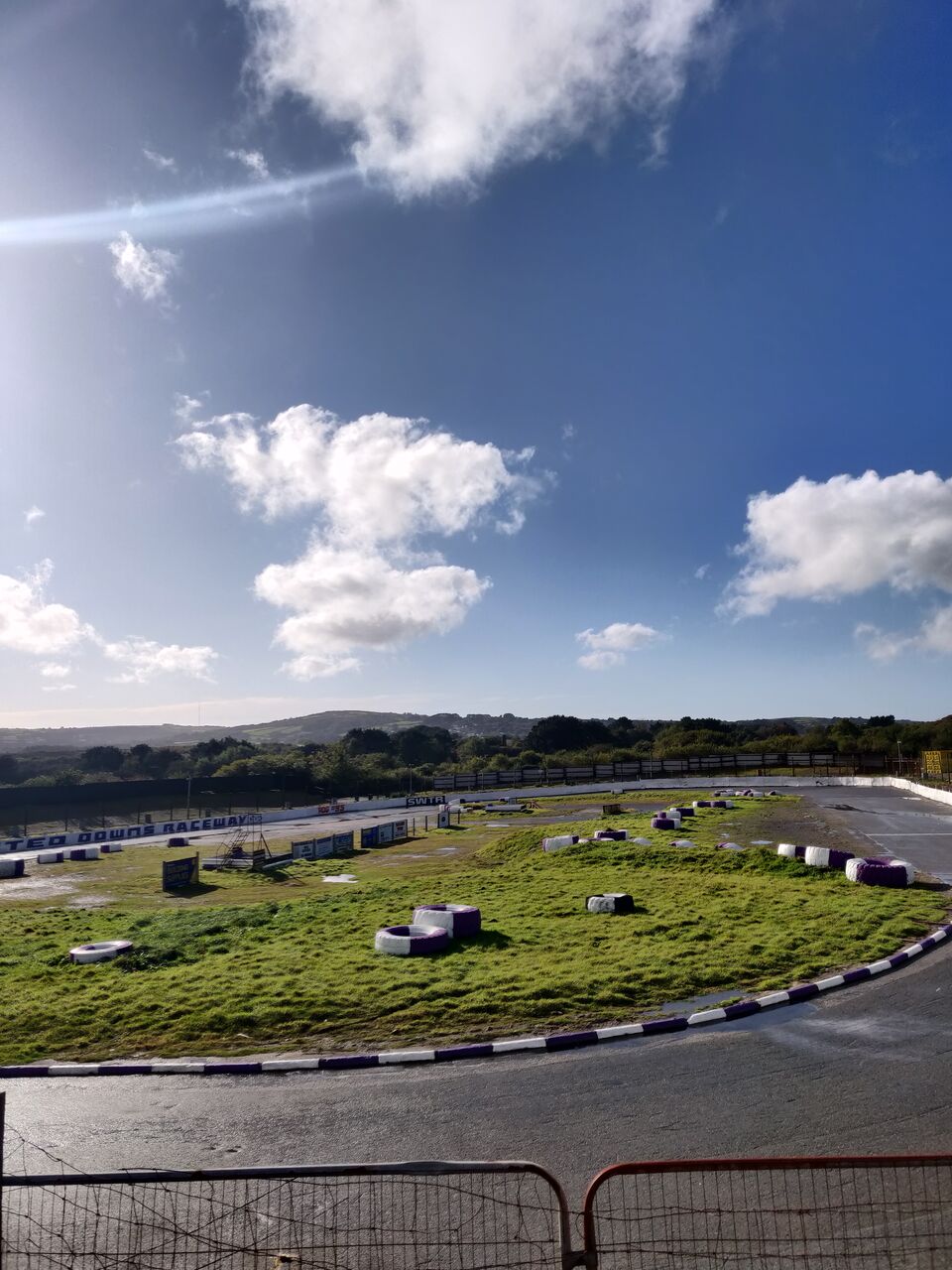
To understand technology's material foundations requires starting with the ground itself. The granite of Carn Marth stands in the distance as both witness and catalyst to United Downs' multiple lives. This massive formation determined what minerals formed, what could be mined, and consequently what technologies developed across centuries of human engagement with this site.
Unlike traditional ruins with “walls, smothered sound, dark interiors and restricted movement,” archaeologist Hillary Orange notes that the Cornish mining landscape remains “wild and unruly,” open to the sky.
United Downs embodies this wildness through its transformation from mine to raceway, stock car racing sitting atop mining heritage without erasing it. These overlapping identities created a space well-suited for disciplinary cross-wiring, where experimental approaches could flourish.
The site's distinctive history includes the bal maidens — women and girls who performed crucial ore processing tasks, using different hammering techniques that required an intuitive understanding of rock fracture patterns. As Dave explained, “They had to be experts in mineralogy... they would look at the rock and know how it was laid out, they would just tap it... all this skill.” Breaking ore with handheld hammers, young girls performed precision “cobbing” work, reducing spalled rocks to thumb-sized pieces rich in copper or tin, while “ragging” involved further crushing cobbed ore using flat-headed hammers. Intensely site-specific, this practical knowledge created different technological and political possibilities than than those found in Britain's coal mining regions, where material conditions shaped entirely different relationships between workers, technology, and landscape.
Tools for Material Engagement
The rain revealed bright veins of malachite and dark sphalerite — minerals formed millions of years ago now scattered across parking areas and mountain bike jumps, waiting to be rediscovered by workshop participants. It also washed away conventional workshop boundaries — turning strangers into co-experimenters, our wet shoes and dampened spirits echoing generations of miners who had navigated these same conditions, their ghosts present in every puddle.
Tools emerged as interfaces between the site's multiple identities: geological hammers translating human intent into fractures ⛏️; microscopes rendering structures visible 🔬; synths transforming conductivity into sound 📦🔉.
These were counter-technologies. By deliberately exposing their workings and material dependencies, they transformed abstract electronic and mineralogical principles into tangible, situated practices.
“The fact that the electronics kits are totally self-contained is really important” explains Dave. “The idea that you make electronic music, which has a particular … method of consumption, and make it outside, doing it with people that don’t think about it in that way until it’s making noise. Taking technology outside, and making it a physical, “body thing.” At least, that was the plan. The rain forced a reconfiguration: what had been designed as an outdoor exploration became instead a huddled collaboration within the VIP booth's confines. This unexpected intimacy transformed the synths from personal devices into social objects, circuit boards nestled among drinks cans, notebooks, mugs, and anoraks draped over chairs.
📦🔉 Unlike sleek consumer electronics, these cardboard synths exposed their components — springs, wires, circuits laid bare to touch and tinker with. Inviting collaborative tinkering rather than passive consumption, the choice of cardboard for the synths' “body” wasn't merely economical; its visible impermanence positioned these devices within cycles of material transformation. As media theorist Shannon Mattern notes, “Cardboard is also a medium for reclaiming the disposable, for local improvisation and imagination, for prototyping other architectures and apparatuses for living.” Shannon Mattern, 'World in a Box'
This collision of timescales was physically embodied in the synths' components: modern electronic parts alongside mine waste and so-called “cats whiskers” — a direct reference to early crystal radio technology. Dave's description mentions how the resulting apparatus “would even pick up the minuscule signal passing through your body if you touched the input spring and another spring at the same time,” From the project’s Gitlab repository. temporarily incorporating the human body into the circuit, and collapsing the boundary between user and technology.
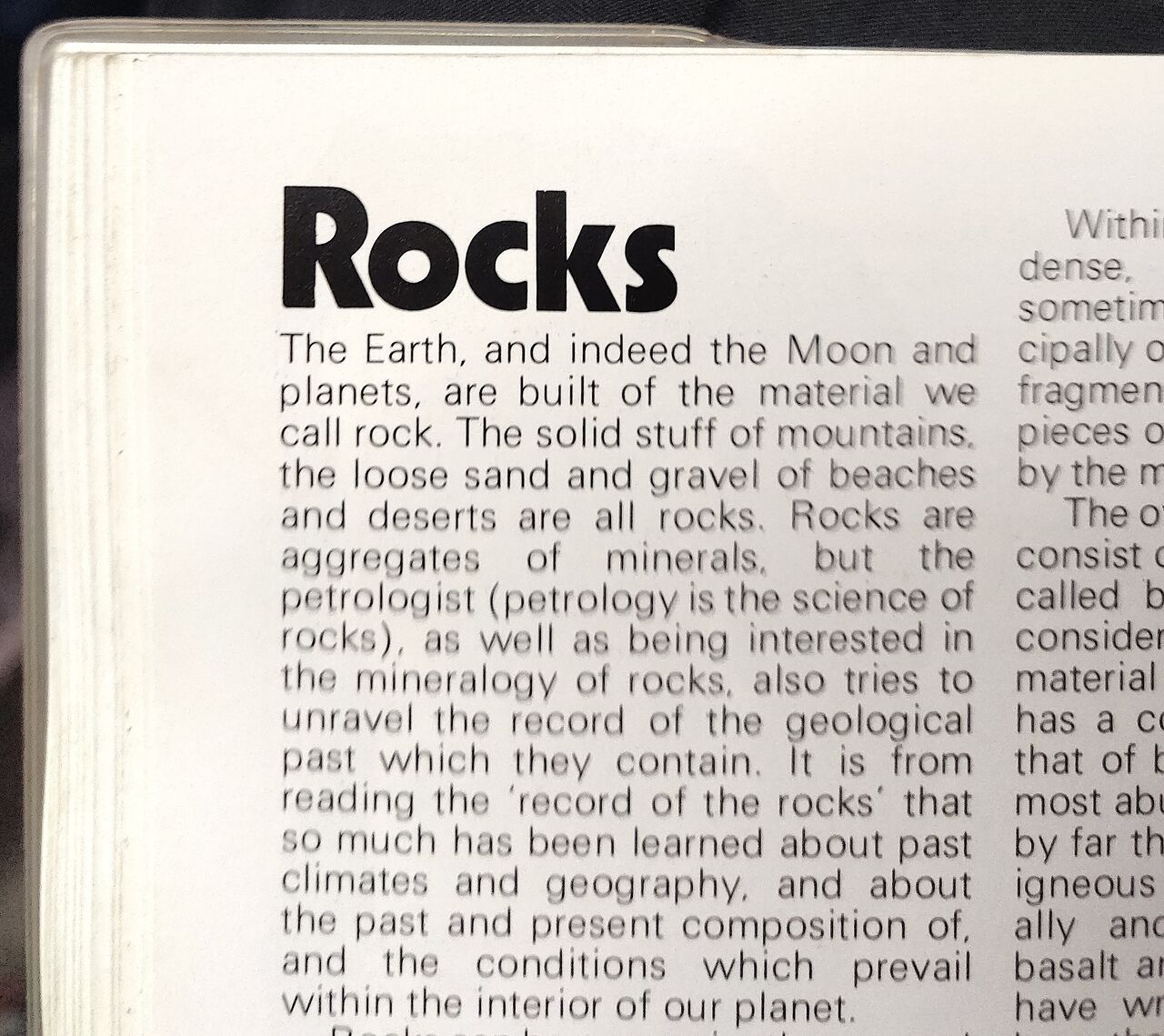
🔬While the synths completed the circuit between contemporary technology and geological conductivity, another tool revealed the material structures underlying these technologies, continuing our journey backwards to their foundations. As rain drummed against the “Rock Lab” roof, the Raspberry Pi microscope — an open-source adaptation transforming institutional instrumentation into accessible counter-technology — created a democratic viewing space where multiple participants could simultaneously witness the hidden architectures of matter.
Unlike traditional microscopes that isolate the observer — a single eye pressed against an eyepiece; the scientist in solitary communion with the microscopic — this microscope setup turned observation into a collective experience. Children handled mineral samples before placing them under the lens, creating tactile-visual knowledge bridges as rough textures felt by fingertips transformed into crystalline landscapes on screen. But what began as methodical examination of mineral specimens quickly expanded beyond categorical boundaries. When children began examining “each other's body parts” after studying pyrite and circuit boards, the microscope collapsed not just spatial but temporal boundaries — flesh, circuits, and mineral formations all rendered equivalent through magnification, each revealing their own organised atoms.
⛏️ Moving between synths and microscope throughout the day, participants experienced technology not as something separate from geological processes, but as their continuation. This movement from finished technology toward raw material became physically embodied as the rain began to clear, allowing workshop activities to expand from microscopic examination to whole-body engagement with the site itself. The geological hammer completed this trajectory “backwards to the ground,” connecting electronic components to the very minerals from which they originated.
One moment in particular stood out — a young participant wielding a hammer at least a third of her size. This striking physical dissonance between child and tool revealed something profound about how knowledge becomes inscribed in bodies through material engagement. As she struggled with the geological hammer, the ghosts of bal maidens hovered — women and girls whose bodies were shaped by years of similar movements, their expertise emerging not from instruction but from thousands of repetitions. Their shoulders bore the memory. These maidens wrapped protective bands on their hands and legs while our workshop participants donned safety goggles — solutions separated by centuries, but united by the unchanged properties of rock and metal.
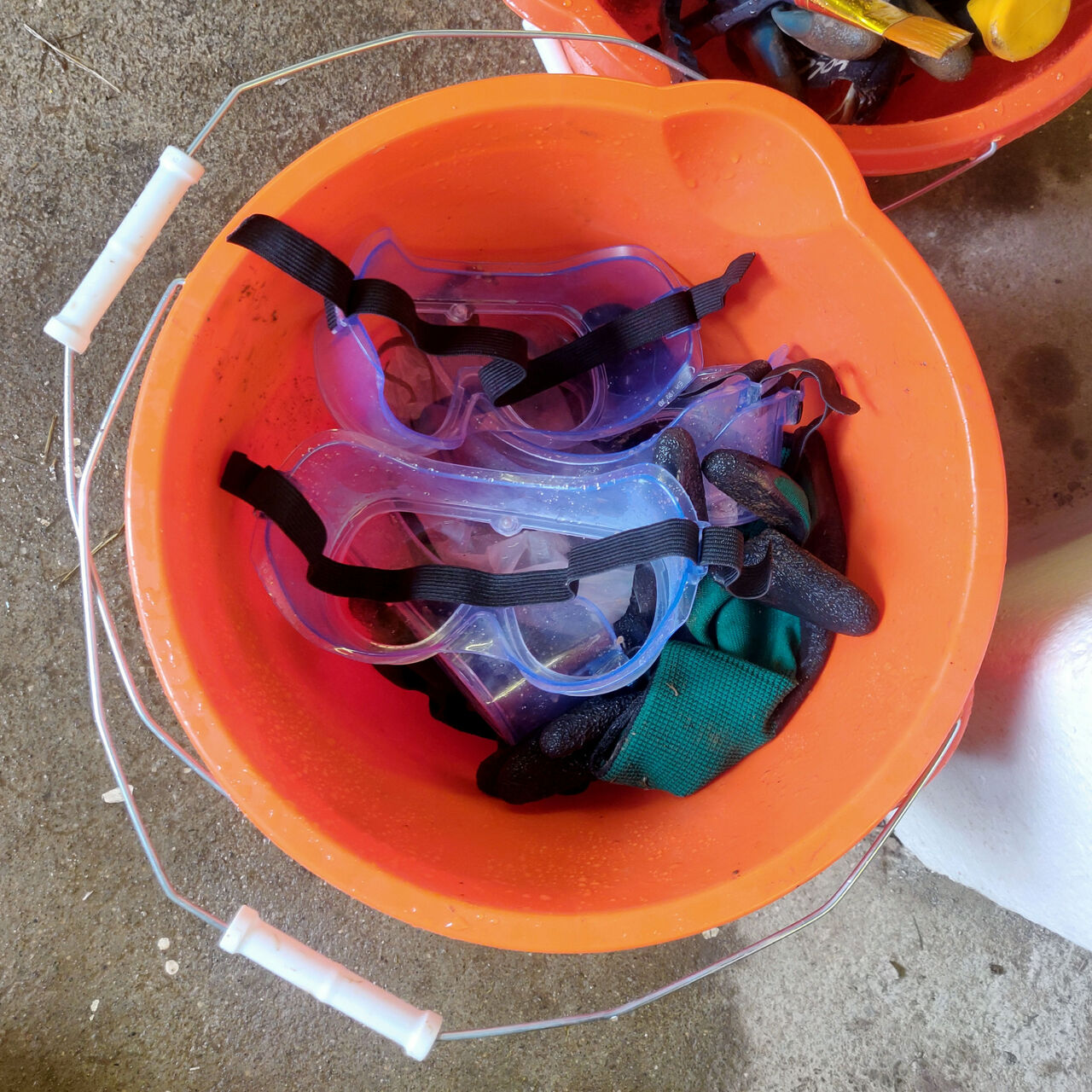
The hammers revealed something else: how human labour becomes a geological force. When bal maidens crushed ore, they were inadvertently initiating new mineral pathways. The hammers exposed sulfides to oxidative weathering, generating secondary minerals like goethite and jarosite that would have otherwise required aeons to form. Workshop participants' hammering similarly participated in geological processes, creating fresh surfaces for weathering. In both cases, human activity became folded into geological timescales, any distinction between cultural and natural history dissolved.
The hammers enabled what Hilary Orange calls “thinking down” through physical action, facilitating an imaginative and interpretive engagement with the site's hidden geological layers:
> Surface: Racing infrastructure (1960s–present)
> Subsurface: US army engineering works, prefab huts, equipment disposal (1940s)
> Middle: Mining waste, tailings, processing floors (18th–19th century)
> Deep: Mineralogical formations, granite intrusions (millions of years)
Local accounts tell of US army equipment — jeeps, machinery, surplus material — dumped into mine shafts during the post-war withdrawal. Some still search these depths for salvageable military hardware, creating an unexpected archaeology where 20th century military detritus mingles with 18th century mining waste.
Each hammer strike echoed across temporal scales — from immediate fracture to centuries of mining history to the million-year geological formation — this physical engagement with the site's materiality completing the workshop's conceptual journey.
Technology as Geological Process
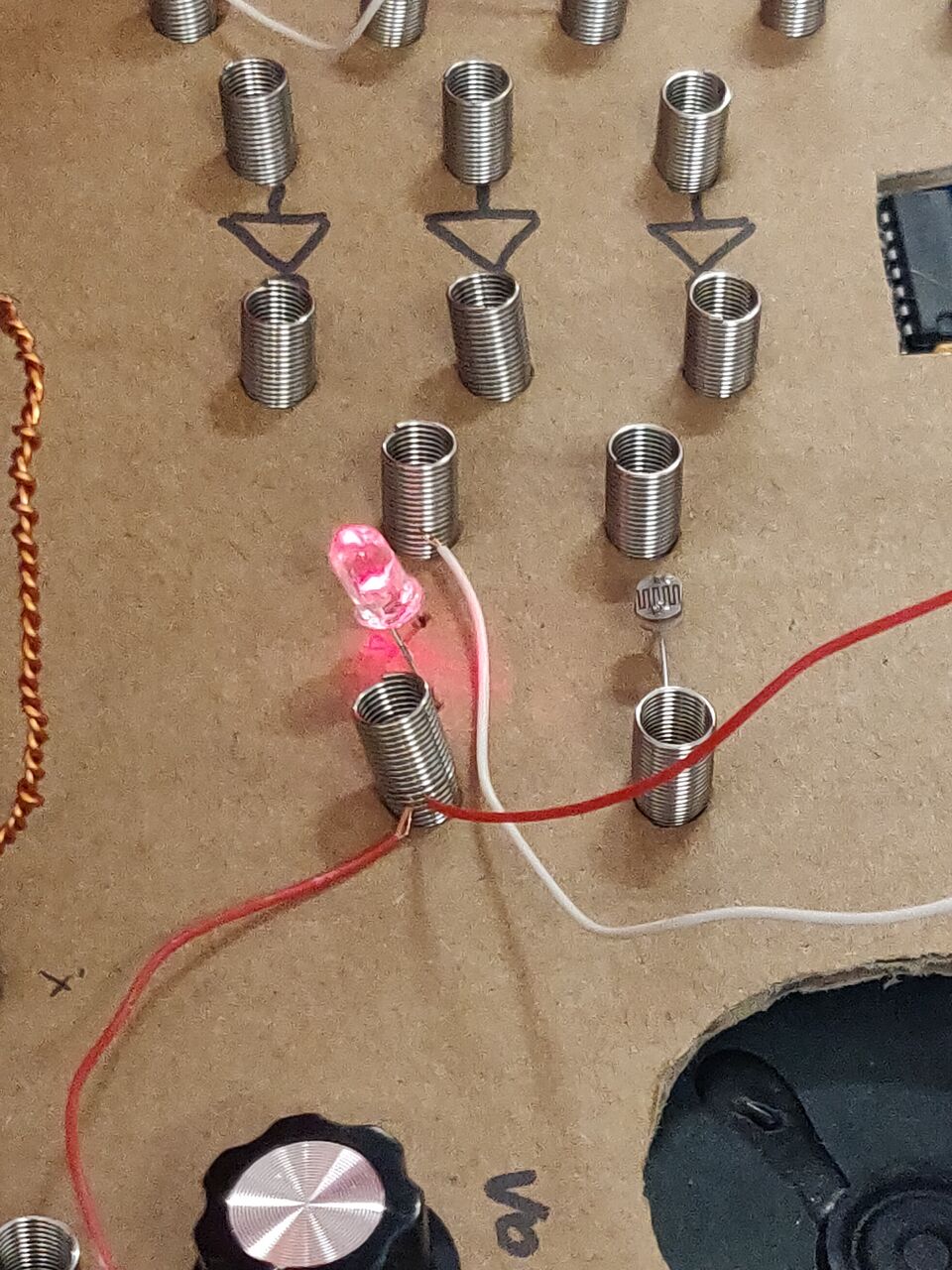
Aided by the weather conditions, this workshop started with electronic minerals — from the cardboard synths and iPhone components, and worked backwards to the ground — and it seemed to work better than doing it the other way around.Dave Griffiths, Organised Atoms at United Downs Raceway
The reverse trajectory from finished technology to raw material, what Dave described as working “backwards to the ground”, offers more than an effective pedagogical sequence. It reveals how these three tools — synths, microscope, hammers — formed a complementary system for understanding technology’s material foundations.
As the rain finally cleared at United Downs, participants emerged from the improvised indoor spaces to engage directly with the site's geology. What had begun as logistical obstacle gradually revealed itself as geological agent — washing minerals clean, making visible what had been obscured, connecting contemporary technological practices to historical mining challenges.
The deluge that had, at first, confined our activities, ultimately became a collaborator in our explorations. By washing minerals clean and forcing us to reconfigure our relationship to the site, it created a temporal eddy, linking the weathering of minerals, the industrial rhythms of mining history, and workshop participants' own electronic improvisations.
We talked about how some of the minerals, like the malachite, have formed since the rocks were lifted out of the depths (below the water table) by the miners — and are now part of a cycle.
Dave Griffiths
Working “backwards to the ground” positioned technology as a temporary configuration within geological processes. The synths' pyrite crystals function both as electronic components and mineralogical specimens, their inconsistent conductivity making audible the contingencies underpinning all technological systems.
In the end, what emerged at United Downs wasn't a universal template but a demonstration of how engagement with science and technology might be re-imagined through place. What remains after the rain clears is not a model but a method: attention to the specific material conditions from which technologies emerge, and recognition of how they remain embedded within ongoing cycles of geological transformation.
⚒
